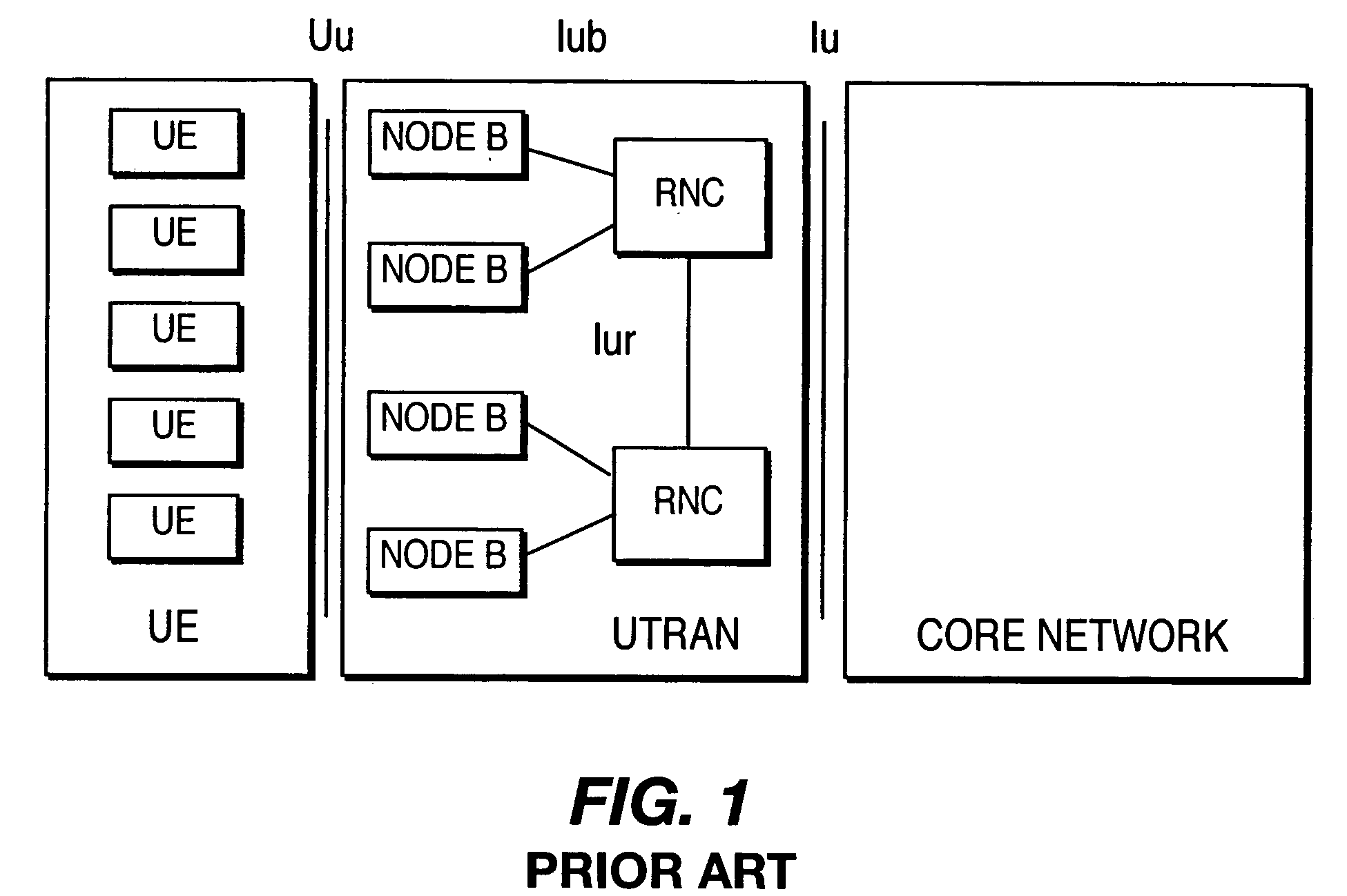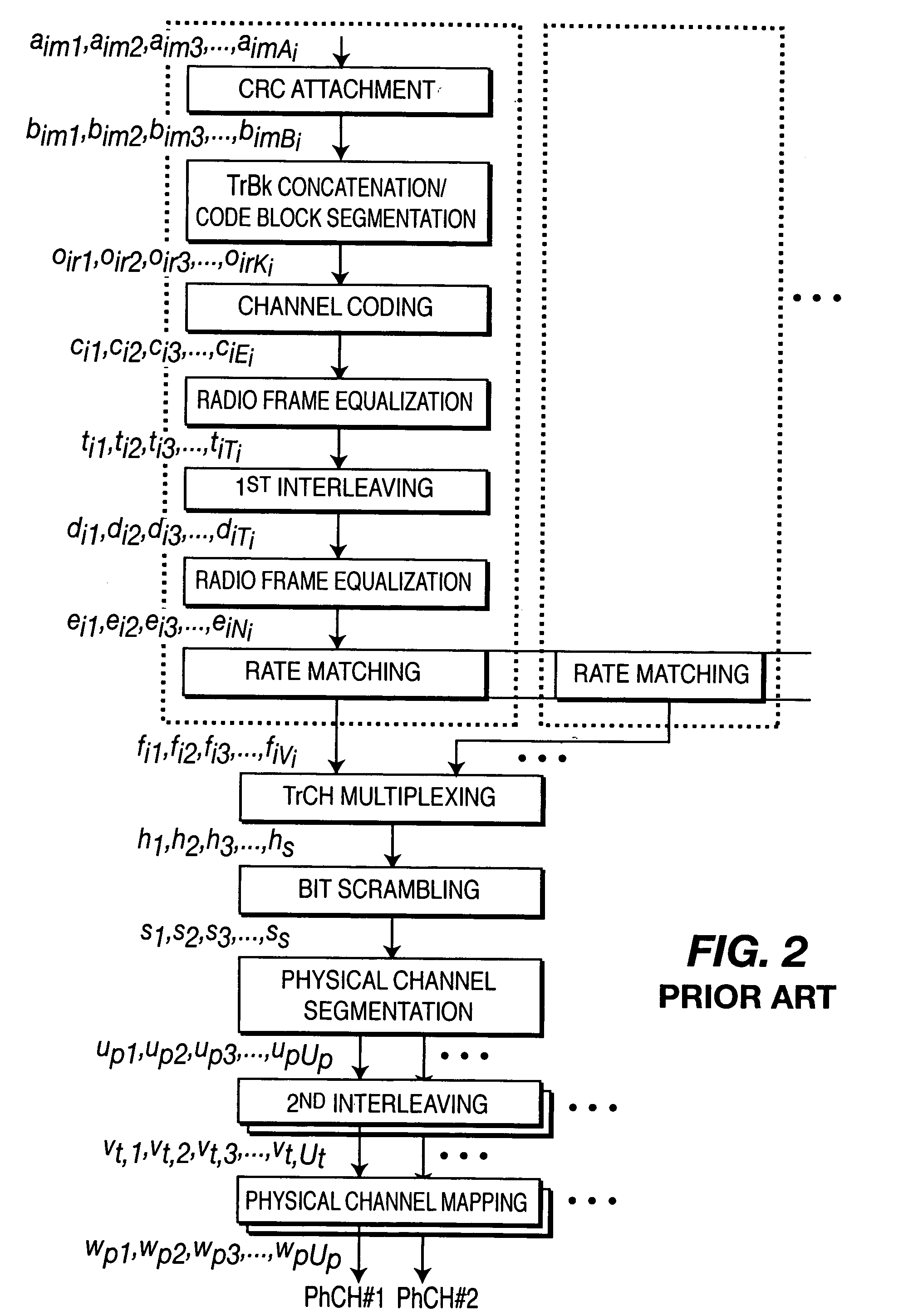Detection, avoidance and/or correction of problematic puncturing patterns in parity bit streams used when implementing turbo codes
a turbo code and parity bit technology, applied in the field of turbo codes, can solve the problems of puncturing string successive bits viewed as burst errors, particular codes created by puncturing and puncturing strings of successive bits showing poorer than expected performan
- Summary
- Abstract
- Description
- Claims
- Application Information
AI Technical Summary
Problems solved by technology
Method used
Image
Examples
Embodiment Construction
)
[0039]In accordance with the present invention, several methods and embodiments are disclosed for detecting, avoiding and / or correcting the problematic puncturing patterns in the parity bit streams without having to avoid code rates.
[0040]The present invention is potentially applicable to layers 1 and 2 in a FDD, CDMA2000 and TDD Universal Mobile Telecommunications System (UMTS) modes of transmission as well as other modes of transmission. Additionally, methods are described hereinafter for modifying the puncturing patterns such that performance of degraded Turbo code is restored.
[0041]In accordance with the present invention, the methods disclosed herein may be implemented in a wireless transmit / receive unit (WTRU) and / or a base station. Hereinafter, a WTRU includes but is not limited to a UE, mobile station, fixed or mobile subscriber unit, pager, or any other type of device capable of operating in a wireless environment. When referred to hereafter, a base station includes but is...
PUM
 Login to View More
Login to View More Abstract
Description
Claims
Application Information
 Login to View More
Login to View More - R&D
- Intellectual Property
- Life Sciences
- Materials
- Tech Scout
- Unparalleled Data Quality
- Higher Quality Content
- 60% Fewer Hallucinations
Browse by: Latest US Patents, China's latest patents, Technical Efficacy Thesaurus, Application Domain, Technology Topic, Popular Technical Reports.
© 2025 PatSnap. All rights reserved.Legal|Privacy policy|Modern Slavery Act Transparency Statement|Sitemap|About US| Contact US: help@patsnap.com



